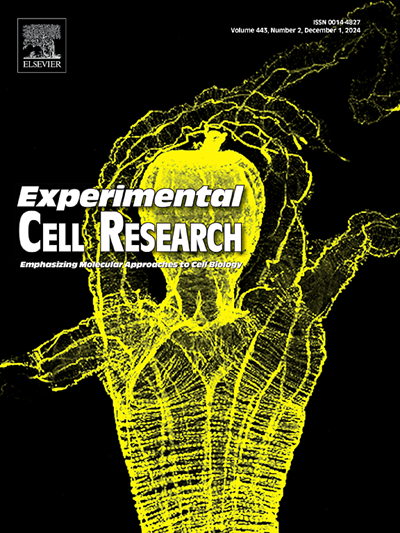CTPS cytoophidia in Drosophila: distribution, regulation, and physiological roles
IF 3.3
3区 生物学
Q3 CELL BIOLOGY
引用次数: 0
Abstract
Intracellular compartmentalization plays a critical role in maintaining cellular homeostasis and regulating metabolic processes. A growing body of evidence suggests that various metabolic enzymes, including CTP synthase (CTPS), can dynamically assemble into membraneless filamentous structures. The formation of these membraneless organelles is precisely regulated by the cellular metabolic state. CTPS, a rate-limiting enzyme in the de novo biosynthesis of CTP, has been shown to assemble into filamentous structures known as cytoophidium. First identified in 2010 by three independent research groups, cytoophidia are evolutionarily conserved across diverse organisms, including bacteria, archaea, yeast, mammals, and plants, suggesting a fundamental biological function. Given the well-established advantages of Drosophila melanogaster as a genetic model, this organism provides a powerful system for investigating the physiological roles of cytoophidia. This review synthesizes current findings on CTPS cytoophidia in Drosophila, with a particular focus on their spatiotemporal distribution in tissues and their regulatory roles in three key biological processes: intestinal homeostasis, lipid metabolism, and reproductive physiology. Furthermore, we discuss the challenges and future directions in cytoophidia research, offering insights into their broader implications in cellular metabolism and physiology.
果蝇的CTPS嗜细胞:分布、调节和生理作用
细胞内区隔化在维持细胞稳态和调节代谢过程中起着关键作用。越来越多的证据表明,各种代谢酶,包括CTP合成酶(CTPS),可以动态组装成无膜丝状结构。这些无膜细胞器的形成受到细胞代谢状态的精确调节。在CTP的新生生物合成过程中,CTPS是一种限速酶,已被证明可以组装成丝状结构,即胞浆。2010年,三个独立的研究小组首次发现了嗜胞菌,它们在多种生物中进化保守,包括细菌、古细菌、酵母、哺乳动物和植物,这表明了一种基本的生物学功能。鉴于黑腹果蝇作为遗传模型的优势,这种生物为研究嗜细胞的生理作用提供了一个强大的系统。本文综述了目前关于果蝇CTPS嗜细胞虫的研究进展,重点介绍了它们在组织中的时空分布及其在肠道稳态、脂质代谢和生殖生理三个关键生物学过程中的调节作用。此外,我们还讨论了嗜细胞瘤研究的挑战和未来方向,并对其在细胞代谢和生理方面的更广泛意义提供了见解。
本文章由计算机程序翻译,如有差异,请以英文原文为准。
求助全文
约1分钟内获得全文
求助全文
来源期刊

Experimental cell research
医学-细胞生物学
CiteScore
7.20
自引率
0.00%
发文量
295
审稿时长
30 days
期刊介绍:
Our scope includes but is not limited to areas such as: Chromosome biology; Chromatin and epigenetics; DNA repair; Gene regulation; Nuclear import-export; RNA processing; Non-coding RNAs; Organelle biology; The cytoskeleton; Intracellular trafficking; Cell-cell and cell-matrix interactions; Cell motility and migration; Cell proliferation; Cellular differentiation; Signal transduction; Programmed cell death.
 求助内容:
求助内容: 应助结果提醒方式:
应助结果提醒方式:


